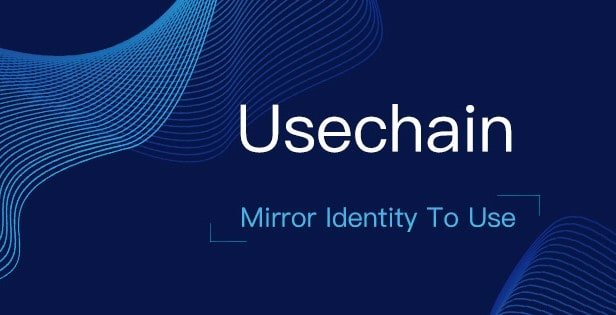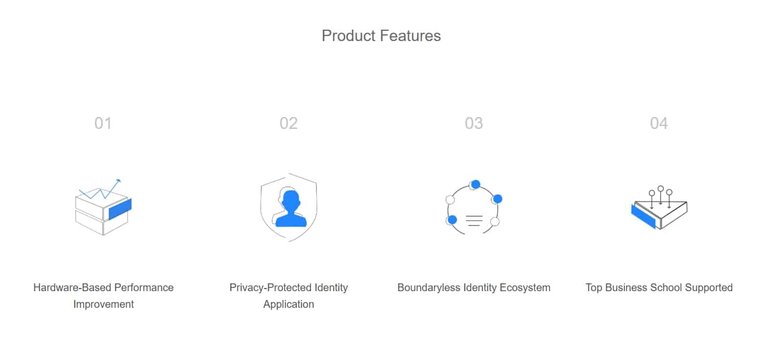
Blockchain technology has added a new dimension to the transactional system though it has not yet been adopted by the mass market. The birth of Bitcoin was the beginning of the new ers to the supply by declining production. Usechain is able to solve all the Impossible Trinity with the dimension to reach in a perfect balance with security and decentralization.
It imposes all the advanced technology and operating system providing support to the application explorations in finance, consumption, entertainment and social management. It provides proper support for DApps with the infrastructure under the precondition of the same security level for the privacy identifying the blockchain network.
Design and Innovation
The design of Usechain includes the application service, components, protocol and core framework of the underlying public blockchain. It consists of some key innovations that have been designed in a certain way to make the system feasible:
Multi-Level Authentication Mechanism: This layer uses the solution of cryptography establishing a multi-level of correspondence mechanism for the on-chain address for the identity of authenticated users. It records the mapping relationship on the chain without exposing any other information to complete the authentication process by not damaging the private security.
RPOW Consensus Mechanism: RPOW is the short form of Randomized Proof of Work and the consensus algorithm of the system has been developed based on current algorithms and security, high performance and anti-attack for Trusted Execution Environments building the hardware. This will help to achieve a high frequency of transaction verification on the premises of lower energy consumption with the fair environment for mining. The combination of decentralization and distributed ledger is also possible for communicating synergistically and resisting attacks. This will reach the level of required application in terms of scale, speed, and cost.
Network Sharding Technology: the KaZaA P2P protocol has launched the Identity Network Sharding process through Identity Transaction Sharding strategies designed for network sharding can be realized based on the account of user addresses. This way the transactions can specify the address by confirming the appropriate addresses. It might need to erase the needs for confirmation through the nodes into the network so that the transactions can be confirmed even in the shortest period of time bearing the capacity for increasing the condition of resisting double-spending attacks.
Identity Virtual Machine: It sets a new standard for building high performing smart contracts to define the sandbox with adaptations. Usechain is building an intermediate communication layer to interact with IVM for underlying blockchain with external APIs and sub-chains. This can directly be programmed based on the intermediate communication layer to make up for the shortage of Ethereum virtual machine. This will ultimately build the smart contracts for efficient execution interacting with the data for extended help for the application scenarios.
Light Node Client: The higher-level of adoption for Merkle Tree can be used for achieving the transaction and status verification reducing the amount of data for the light-node clients. This may require the synchronized verification for the accurate transactional data.
Online Fault Tolerance: A specific node for encounters may have a conflict or fork with the disputed accounts and blocks based on the frozen sole identity of mapping. These nodes will continue the usual transactions for generating the blocks. The blocks can be disputed with the accounts and will be judged by a specialized committee board.
The innovative design of all the layers serves with a certain quantity of applications to meet with some specific needs implementing other applications and business models at a low cost.

Usechain has set a precondition where it uses the same level of security for maintaining privacybetween identity and anonymous public blockchain. The platform’s official token referred to as UST is based on the ERC20 protocol on the Ethereum blockchain. Users can acquire the token during the initial Coin Offering. The main aim of creating the token is to give an opportunity for all participants to be involved in the building of the entire community. The token will also be used to reward the developers and supporters of the platform’s community as well as enabling the entire ecosystem to grow. UST will also allow every participant who hold tokens to use Dapp (Decentralized Application).
The funds acquired from the token sale will used in divided portions in human labor cost, company operation, marketing, platform development, advisor consulting, risk fund and legal compliance.
Website : http://www.usechain.net/
Whitepaper : http://www.usechain.net/usechain_en.pdf
Twitter : https://twitter.com/usechain
Facebook : https://www.facebook.com/UsechainFoundation
Telegram https://t.me/usechaingroup
Bitcointalk Profile : https://bitcointalk.org/index.php?action=profile;u=1126963